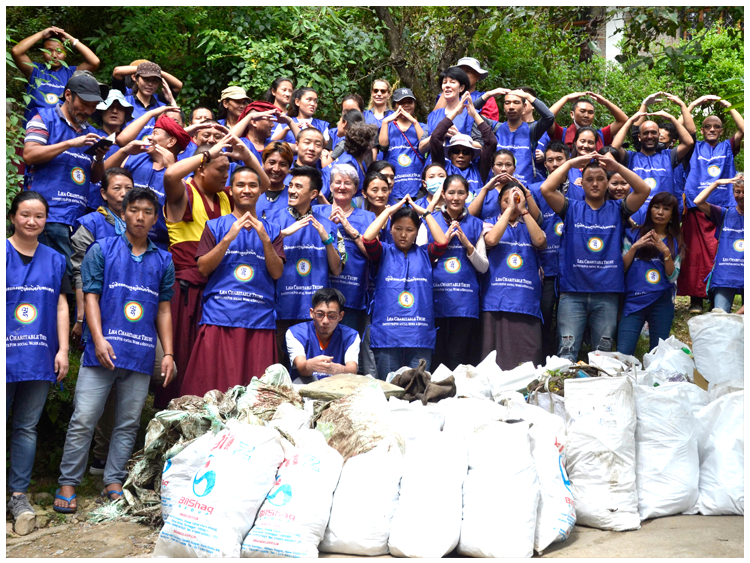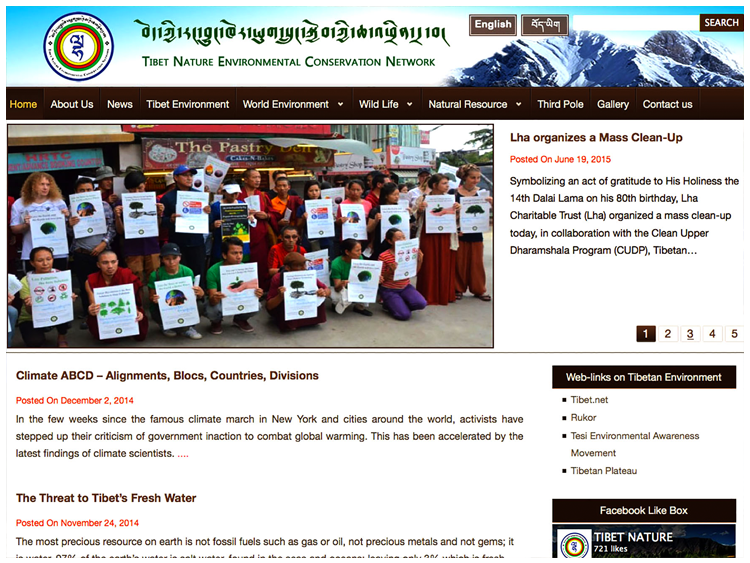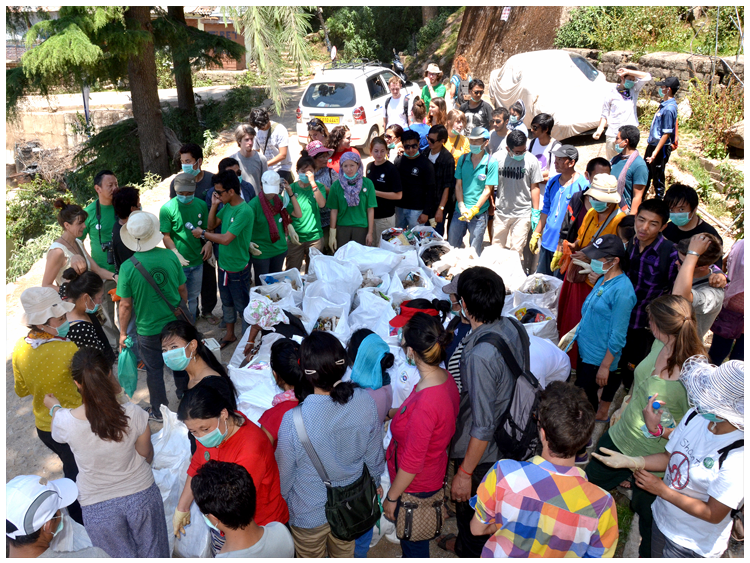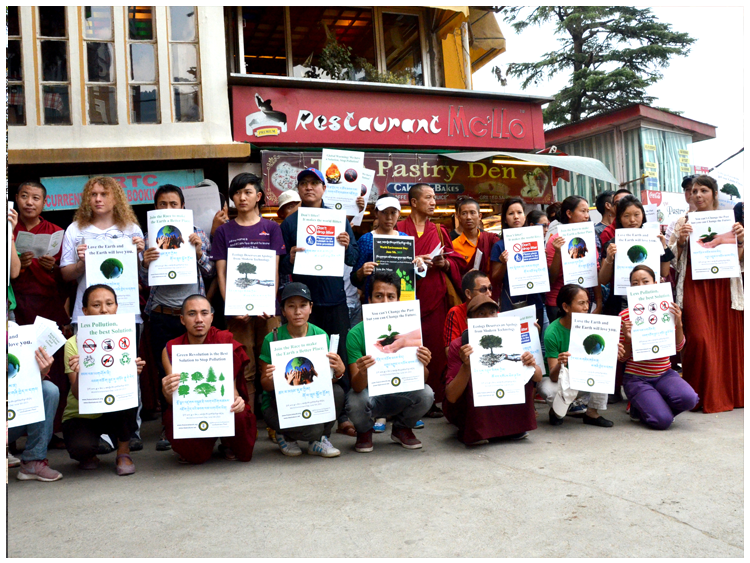 Protection of the environment is a moral responsibility of each and every inhabitant of this planet. Therefore, the ecology of the Tibetan plateau, situated at the heart of Asia and often referred to as the roof of the world, is of the utmost importance. The Tibetan plateau is the principal watershed of Asia. As many as 10 major rivers originate in Tibet, supplying millions of people in east and south Asia. It is estimated that around 85% of Asia’s population and 47% of the world population rely on the rivers which originate in Tibet.
Protection of the environment is a moral responsibility of each and every inhabitant of this planet. Therefore, the ecology of the Tibetan plateau, situated at the heart of Asia and often referred to as the roof of the world, is of the utmost importance. The Tibetan plateau is the principal watershed of Asia. As many as 10 major rivers originate in Tibet, supplying millions of people in east and south Asia. It is estimated that around 85% of Asia’s population and 47% of the world population rely on the rivers which originate in Tibet.
The Tibetan plateau is very fragile. Therefore, any disruption of the ecology is bound to have global consequences. Because of global warming, environmental groups are warning that there is an acceleration of the glaciers melting in the mountains of Tibet. This reaction could cut off water sources vital for large parts of many south Asian countries. One particularly alarming forecast warns that 80% of the glacial area in Tibet could disappear by 2035.
An Environmental Website in Tibetan and English
 The Tibetan diaspora has increasingly employed the Internet to its advantage. The Internet has greatly enhanced the ability of Tibetans worldwide to remain in touch. We have created a virtual community, where distance is never a barrier to communication.
The Tibetan diaspora has increasingly employed the Internet to its advantage. The Internet has greatly enhanced the ability of Tibetans worldwide to remain in touch. We have created a virtual community, where distance is never a barrier to communication.
Although there are numerous and very informative websites run by the Tibetans in and outside Tibet, an overwhelming majority of these sites are in either English or other major world languages. There are only a handful of websites in Tibetan. Out of these few, the websites managed from inside Tibet carry no information about Tibet and its environment in the Tibetan language.
For years, there were no websites in the Tibetan language that provided comprehensive information on issues related to wildlife and environment of Tibet. That all changed in 2009 when our bilingual website, Tibet Nature, was created www.tibetnature.net. It informs Tibetan and Himalayan communities, as well as the general public, about the importance of the environmental issues of Tibet and worldwide. The website includes researched articles in both Tibetan and English and is updated regularly as new information becomes available. As of today, Tibet Nature contains over 217 environmental articles in English and 383 articles in Tibetan.
 Tibet Nature also features the entire content of Ngawang Rabgyal’s book on wildlife and conservation, which is based on several years’ research into Tibet’s bio-diversity. He is the current director of Lha, and his book, Ancient and Contemporary Environment Conservation Education and Introduction of International Endangered Wildlife, is published by the Wildlife Protection Society of India (WPSI). It was published on July 5th 2008, coinciding with World Environment Day and is endorsed by the Sacharuna Foundation.
Tibet Nature also features the entire content of Ngawang Rabgyal’s book on wildlife and conservation, which is based on several years’ research into Tibet’s bio-diversity. He is the current director of Lha, and his book, Ancient and Contemporary Environment Conservation Education and Introduction of International Endangered Wildlife, is published by the Wildlife Protection Society of India (WPSI). It was published on July 5th 2008, coinciding with World Environment Day and is endorsed by the Sacharuna Foundation.
In 2014, Lha conducted a survey focusing on McLeod Ganj’s environmental status. After spending ten days surveying 107 business owners and residents in and around McLeod Ganj, Lha found that the busiest tourist spots, the Main Square area and Bhagsu Road, were considered to be the most polluted. Recordings of noise levels were also high. Through that survey, locals and visitors voiced their concerns and the daily challenges posed by environmental issues. The findings have been presented to the relevant Department of the Central Tibetan Administration and local authorities.
Following the survey, Lha made these suggestions:
First Priority – Garbage Disposal: There should be public garbage bins with a separate recycling container in each shop. While the Clean Upper Dharamshala Program has been effective, workers should have better incentives, such as higher wages. Fines for littering need to be implemented. Lastly, scheduled mass cleanups and more public toilets would reduce waste considerably.
Second Priority- Motor Vehicle Emissions: Most vehicles cater to tourists; therefore, the number of tourist and private vehicles should be controlled. This would also reduce noise pollution. One suggestion was a No-Vehicle Day once a week.
Third Priority – Sewage and Drainage: There are ineffective sewage and drainage systems, which damage roads and contribute to more congestion and pollution. The suggestion was to clean and maintain them to prevent overflow and breakage.
Fourth Priority – Raising Awareness: A Community outreach program with a door to door approach is a priority. It is advised that there also be environmental education in schools and youth centers.
World Environment Day
 June 15th 2008 was declared World Environment Day, and different campaigns and awareness programs are organized to mark it on this day every year. To assist in making Dharamshala more environmentally friendly, Lha has started a monthly mass cleanup project in collaboration with the Tibetan Settlement Office of Dharamshala and other NGOs. This project is to promote environmental conservation and awareness. At this monthly event, staff, volunteers, and students come together to participate in a mass cleanup of the surrounding area, after which Lha arranges a free lunch for the cleanup participants at Ahimsa House’s Community Kitchen. Here, volunteers and students are able to interact with each other. During mass cleanups, we distribute leaflets in three languages (Tibetan, English, and Hindi) to raise awareness.
June 15th 2008 was declared World Environment Day, and different campaigns and awareness programs are organized to mark it on this day every year. To assist in making Dharamshala more environmentally friendly, Lha has started a monthly mass cleanup project in collaboration with the Tibetan Settlement Office of Dharamshala and other NGOs. This project is to promote environmental conservation and awareness. At this monthly event, staff, volunteers, and students come together to participate in a mass cleanup of the surrounding area, after which Lha arranges a free lunch for the cleanup participants at Ahimsa House’s Community Kitchen. Here, volunteers and students are able to interact with each other. During mass cleanups, we distribute leaflets in three languages (Tibetan, English, and Hindi) to raise awareness.
In 2016, the Tibetan Representative Office of Dharamshala awarded its Environmental Care award to Lha in recognition of our contribution towards the conservation of the environment. We were recognized for our methods of carrying out many environmental awareness programs, such as the local monthly cleanup and the clearing of the largest illegal dump site on Jogiwara Road.
On June 15th 2017, an essay contest was held amongst the language students at Lha on the topic of ‘Connecting People to Nature’. Twenty-five students took part in the essay competition in Tibetan and English respectively, which was organized to create awareness of environmental issues in the community. We continue to work to create awareness, by distributing pamphlets in three different languages and organizing talks on environmental issues.
Read {hits}95{/hits} times
